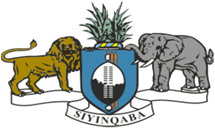The microbial scourge is ever-increasing and becoming more and more resistant to antimicrobials, yet the development of new antimicrobials is declining. Antibiotic resistance is one of the biggest public health challenge. Antimicrobial resistance (AMR) is the ability of a pathogenic microbe to develop a resistance to the effects of an antimicrobial medication. If there are no measures to curb and control AMR, human and animals may die from small infections that could have been treated. The government of Eswatini has committed itself and considers AMR containment a priority, and the government strives to promote collaboration and concerted efforts among various sectors to combat AMR in One Health approach. The Ministry of Health leads the AMR containment in collaboration with the Ministry of Agriculture and Ministry of Natural Resource and other relevant ministries and stakeholders.
To curb and contain AMR, the Government of Eswatini appointed an AMR containment Committee (AMRCC) with members from the Ministry of Health(MoH), Ministry of Agriculture (MoA), Ministry of Natural Resources and Energy (MONRE), FAO and WHO country office representatives in 2016. The AMRCC developed the national AMR containment strategic plan 2018-2022 and also an implementation plan for October 2020- September 2025, as a foundation for activities to curb and contain AMR.
Surveillance of Antimicrobial use (AMU)/ antimicrobial consumption (AMC)/ antimicrobial resistance (AMR) is happening in Eswatini using a One Health Approach – involving the Ministries of Health (MOH), Agriculture (MOA), and Natural Resources & Energy (MONRE) – with support from the UK Government’s Fleming Fund which is being implemented by ICAP.
Initially, antimicrobial stewardship (AMS) committees were established in the four human health sentinel sites – Hlatikulu Government Hospital (HGH), Mbabane Government Hospital (MGH), Good Shepherd Hospital (GSH), and Raleigh Fitkin Memorial Hospital (RFM); and AMS members were trained on AMU/AMC/AMR principles, data collection & analyses, and interpretation of findings. Activities conducted between April and June 2021 included trainings of personnel in the Ministry of Health at national, regional, and facility levels on AMU/AMC/AMR principles. The departments trained included the health management information systems (HMIS), epidemiology and disease control unit (EDCU), pharmaceutical services (including the medicines regulatory unit (MRU), laboratory, and representatives from all registered importers of pharmaceuticals in the country.
In the MOH an AMU/AMC/AMR surveillance concept note with costed activities to be conducted to ensure a well-functioning surveillance system was drafted and finalized. A similar concept note for the MOA was drafted and currently under review from the technical team in the MOA. Also, in the MOA, protocols for AMR surveillance in poultry have been drafted and finalized. Laboratory personnel from the MOH and MOA were trained on bacteriology and antimicrobial susceptibility testing (AST), equipment and reagents procured, and the laboratories are currently performing AMR testing in the four human health sentinel sites, and in two laboratories in animal health – the food and hygiene lab and the central veterinary lab.
As a measure to strengthen data quality, storage, analyses, utilisation, and dissemination, the MOH, MOA, and ICAP teams have drafted an almost final data flow architecture which entails how data will flow between the different levels of care and between ministries. A procurement plan for equipment to facilitate this process has been drafted, reviewed, and will soon be shared with the funder to facilitate procurement. Ongoing activities include quarterly AMU & AMC data collection, analyses, and reporting to stakeholders such as the AMS committees, the AMRCC, and the senior management team (SMT) in the MOH.
As of April 2021, bacteriology and AST testing has been happening at HGH, MGH, RFM, and GSH to produce data on bacterial organisms isolated, the antibiotics these bacteria are sensitive to, and those antibiotics that the bacteria have developed resistance to (AMR). In the MOA, AMR testing is also happening in the two labs. Information on AMU/AMC/AMR will be important to inform policy and treatment guidelines on antibiotics that are effective in managing common infectious conditions in Eswatini, and ultimately inform the procurement of antibiotics to reduce costs on ineffective antibiotics.
In conclusion, AMU/AMC/AMR activities in Eswatini are underway in the MOH and MOA though there are some challenges with the finalization of key documents that pave a concrete surveillance plan and procurement of equipment particularly in the MOA (e.g., though AMR has started, AMU and AMC activities have not commenced, yet these activities are happening in the MOH). For the country to have a complete picture of AMU/AMC/AMR, information should be available from both ministries to make meaningful conclusions and decisions.
